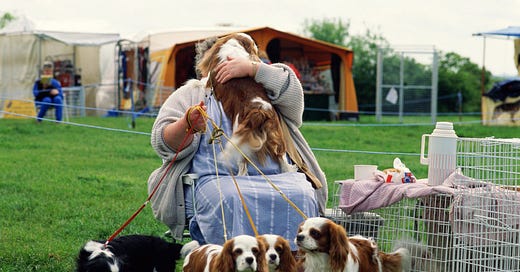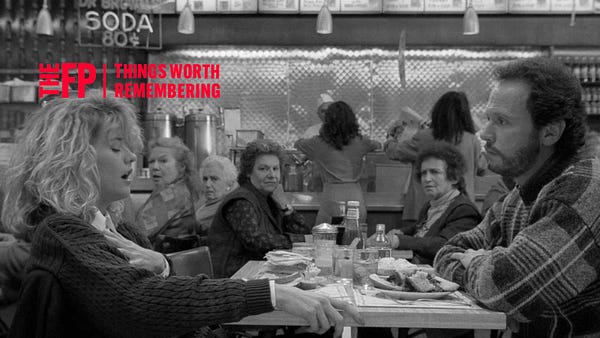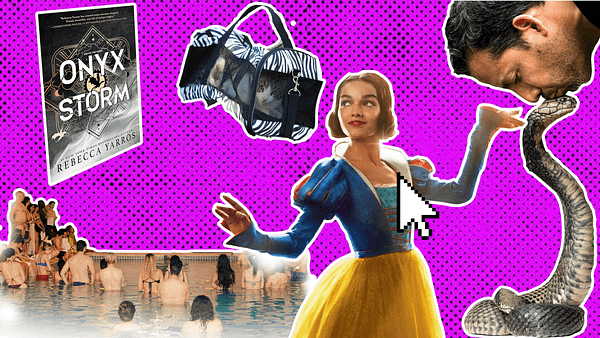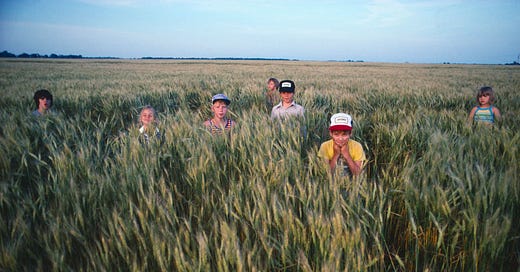
The Free Press

As you are surely aware, May is National Pet Month. Don’t ask me who decided May is National Pet Month; ironically, for a celebration of a relationship between master and captive, it’s hard to figure out who’s in charge of this thing. But a number of websites assure me that what I’ve just proclaimed is true, and I always trust what the internet tells me.
With May on the horizon, I find myself reflecting on my history with pets—my own and others’. There’s no way around it: I have a terrible track record with animals.
Growing up, my sister Zoë and I housed a number of ill-fated rodents. The first was a hamster we used to let wander around the TV room, until it fell into a hole in the floor by the radiator. This was very upsetting. My mother, who can usually recognize the hopelessness of practically any situation, was so moved by our despair that she helped us fashion a rescue device. She’s not a dim woman, but it does seem that her children’s distress was so compelling it made her believe that a hamster in dire straits could scale a vertical toothpick ladder if it could only recognize the urgency of the situation. “It doesn’t hurt to try!” she said, guiding the tiny scaffold into the floor. My father watched her, having none of it. “That thing is gone!” he promised, my sister bawling nearby.
At another point we had a gerbil, a totally pointless being that’s sort of a cross between a hamster and a rat. The gerbil we bought turned out to be pregnant, but evidently had no interest in raising the five or six children she birthed, whom she utterly ignored. We tried scooping up the tiny hairless pups with a spoon and depositing them next to their mother on the off chance she might acknowledge them. We were later told that by touching them with a foreign object we’d likely obliterated any remaining hope of maternal connection, so we got to feel responsible as we listened to the desperate squeals of infant gerbils as they starved to death.
That experience put everyone off pets for the remainder of our childhood, and I can’t say I have ever developed a long-term emotional connection with any animal. Unless you count naked antipathy, which is what I have with my friend Sophie’s dog.
She and her fiancé adopted this traumatized shepherd mix a few years ago, and since then have spent a sizable chunk of their net worth on a so-far vain attempt to get it not to act like a total nightmare. Every time I see them I’m told the dog has made “progress” in its ongoing behavioral therapy, only to be greeted at the door by a wildly baying lunatic of a creature who would kill me given the chance.
“She senses your antagonism,” Sophie explained to me the last time I was there, after the beast had sunk its teeth into my leg when I’d offered a treat.
“I was giving it food,” I protested.
“She’s not an it,” Sophie informed me, the blood pooling at my feet.
I believe I now have the legal right to have Sophie’s dog put down. The trouble is she loves this animal, certainly more than she loves me, and I have been asked on several occasions not to speak of its euthanasia. Sorry—her euthanasia.
My older brother Geremy and his husband Ted had an adorable dachshund named Nellie, and we all got to watch as Nellie turned from a spry, happy puppy to a furry, arthritic tube of ailments. This girl was halfway through her second decade when she finally kicked the bucket, not before the GDP of a minor nation was spent on prolonging her existence. I once went with Geremy and Ted to pick up Nellie from an operation; her liver had failed for the eighth or ninth time. I balked when I saw the bill and reminded them that Nellie was, you know, an animal.
“What else do we have?” Geremy said. “We’re childless homosexuals.”
“She’s our daughter,” Ted reminded him, signing over the deed to their apartment. She was gone within the month.
Even more remarkable than what people invest in their pets is what they put up with from them. Zoë and her husband used to keep a pair of bunnies in their home in Oakland, and these things’ main domestic contributions were the beady turd piles they’d leave on the living room couch. For years Zoë and Ivan tolerated these animals, apologetically whisking away little mounds of rabbit crap whenever a guest might wish to have a seat.
“How can you live like this?” I’d say to them. And they’d say something hostile like, “How do you mean? As homeowners? As people with jobs?”
The bunnies have thankfully been displaced in recent years by my five-year-old niece and two-year-old nephew, who shits in his pants, like a civilized being. I’ll call them Molly and Joel.
There were a few years’ overlap between the bunnies and the first kid, and it was always nerve-wracking to watch little Molly crawling around a house where fecal matter was part of the essential decor. “What if she puts a poo in her mouth?” I asked. Zoë wasn’t concerned: “She’ll spit it out.” Zoë’s like that: very reasonable—aside from her decision to live for years in a shit palace.
It’s too soon to characterize Joel, the two-year-old, as anything other than good-natured. His sister, though, is developing nicely into a dark-humored member of the family. “I like you more and more the older you get,” I told her recently, to which she replied, “You’ll really like me when I’m dead.” Five stars.
One thing pets have over kids is people aren’t as torn up over animals’ self-esteem. A cousin of ours has a daughter, Lisa, who’s a few months Molly’s senior and preternaturally gifted. Molly’s an all-around excellent child who has nothing to be insecure about. But Lisa? That kid’s a genius. And the situation, unfortunately, makes for great material. A couple years ago Zoë sent the family a photo of a puzzle Molly had completed “all by herself in ten minutes!” I texted back: “I wonder how long it would have taken Lisa.” World War Three. Worth it.
Look, in my mind my niece is the eminently relatable normal kid, cursed with an overachieving relative to be compared to for the rest of her life—much like I have to contend with my siblings, with their families, property, and yes, pets. If the situation can’t be helped, it can at least be acknowledged.
But even that has proven treacherous. On Passover, my parents and I were chatting with Molly about the upcoming seder, and who would read the Four Questions. (Molly is on the cusp of reading; Lisa probably has a book deal at Scholastic.) When someone suggested that Lisa might already be reading, I asked my niece, “Do you want Lisa to not be able to read?” She grinned and nodded, to our delight. “She’s one of us!” my mother cackled.
Zoë was not happy when she heard about this. “I don’t want that in her head,” Zoë told us.
What Zoë calls “encouraging negativity,” I call living in reality. Of course, now that I read those words, I wonder just how much I ought to be trusted when it comes to molding these kids’ perceptions. You’re dealing with someone whose idea of a column on National Pet Month is a retrospective of animals he thinks would have been better off dead.
I do think, given the right pet, I could form a bond like other people do. Humans are easier for me—but even those I have problems with. People, after all, can be irrational, wasteful, and sentimental. They can joke, though, which you don’t get from pets. Nor do you get with a pet, as opposed to, say, a niece, the thrill of knowing a miniature version of yourself, and getting to play a part in the way they understand themselves—hopefully without damaging them too severely.
Sometimes I’ll look at Molly and Joel and want kids of my own. Then one of them will start wailing and the paternal instinct subsides. Still, I imagine it must be something, to be so thoroughly depended upon. Maybe I’ll get a dog, if I can find one that doesn’t want to tear me apart. I can start there.
Ben Kawaller writes about culture and hosts an interview series for Los Angeles magazine. This is his first piece for The Free Press. Follow Ben on Twitter.
And if you haven’t subscribed yet—what are you waiting for? Join The Free Press today:


















5 stars
the best way to get over the death of a dog is to get another one. and always buy from a good breeder as that is the best way to keep dogs out of shelters..